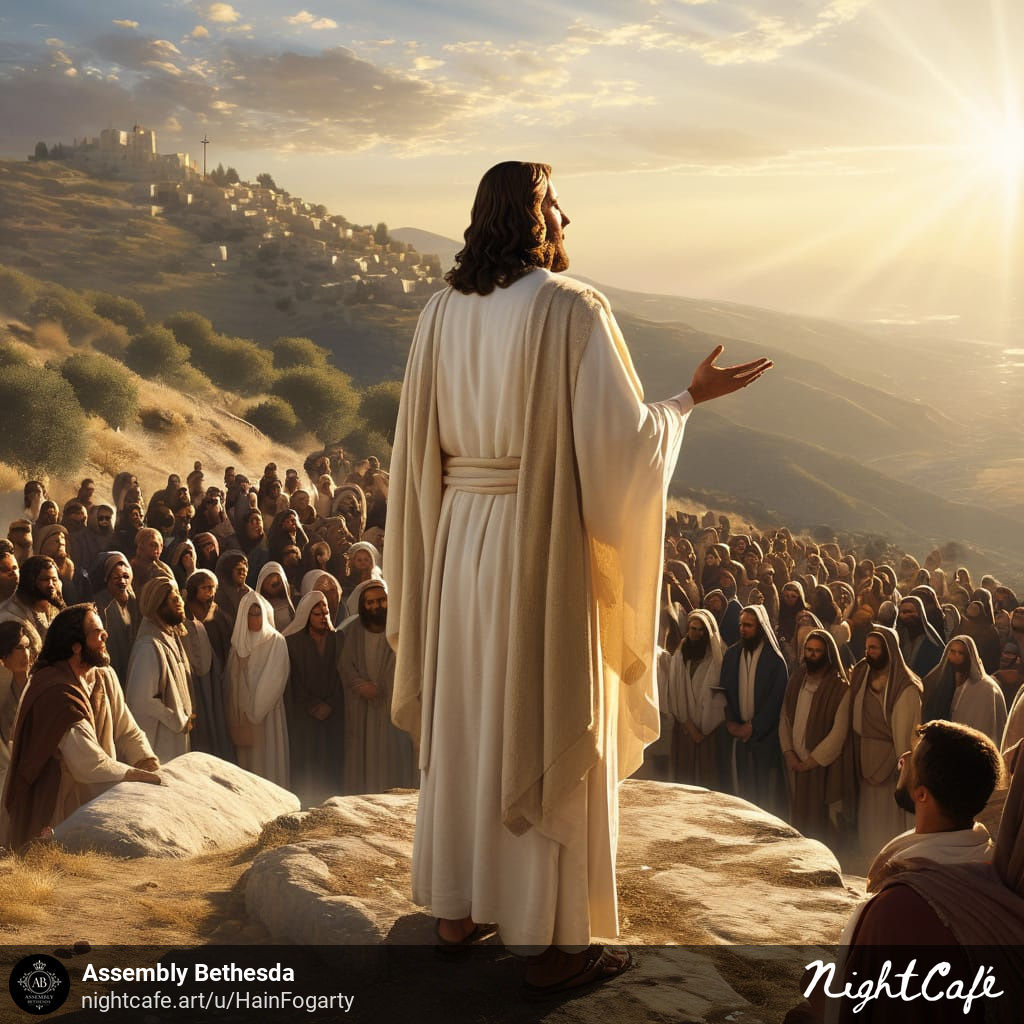Dear reader, I’m going to take a more academic approach to this post because this is more of a theological issue than a sermon type of topic. If you come across a word or phrase you don’t know, check it out. This is an extremely important part of the sermon on the mount, so I encourage you to really take note of it.
As you stand on a Galilean hillside, surrounded by a buzzing crowd, a young rabbi from Nazareth declares: “Do not think that I have come to abolish the Law and the Prophets; I have not come to abolish them, but to fulfill them” (Matthew 5:17). There have been rumors that Jesus is upending Jewish tradition in the Sermon on the Mount, but what does “fulfill” mean? Is it a mere nod to the Old Testament or a profound completion?
The Scene: Jesus on the Mount
There is tension. Jesus’ Jewish listeners revere the Torah and Prophets; leaders brand him a Sabbath-breaker. Matthew 5:17 preempts attacks. “Abolish” (kataluo) suggests demolition; “fulfill” (pleroo) implies completion, such as fulfilling a prophecy.
Old Testament arrows point to him. The Sermon follows with intensified ethics: “You have heard… but I say” (e.g., anger as the root of murder). Continuity enriches, not destroys.
Biblical Blueprints: Scripture’s Self-Interpretation
Jesus fulfills prophecies in his crucifixion, such as Isaiah 53’s suffering servant. Post-resurrection, he insists: “All things written about me in the Law, Prophets, and Psalms must be fulfilled.” The Old Testament is a Messiah’s map, not a museum display.
His obedience is flawless: He is baptized “to fulfill all righteousness” (Matthew 3:15), sinless (Hebrews 4:15). Paul declares Christ to be the goal (telos) of the law of righteousness (Romans 10:4).
Sacred sacrifices are nothing more than shadows of his eternal atonement (Hebrews 10:1–18; Colossians 2:17). Temple rituals fade away; he is the temple, the lamb, the priest. Fulfillment climaxes in him, enabling Spirit-led living (Romans 8:4).
Echoes from the Early Church: Patristic Wisdom
Affirming covenant harmony, church fathers (2nd–5th centuries) countered heresies such as Marcion’s anti-Old Testament bias.
In Homily 16 on Matthew, John Chrysostom (c. 347–407 AD) states that Jesus secures the law by living it sinlessly (John 8:46) and enabling us to follow by faith. “Do not kill” implies “harbor no anger” (fortified, not felled).
According to Origin (c. 185-254 AD), literal laws represent Christ’s spiritual growth. Augustine, in On the Spirit and the Letter, sees Jesus shattering the curse (Galatians 3:13), imputing perfection while moral essence persists.
Catholic Lens: Continuity in the New Covenant
Through Trent (1545–1563) and the Catechism (577–582), Catholicism casts Jesus as the law’s interpreter, launching the New Covenant in which righteousness surpasses the righteousness of Pharisees through internal renewal (Matthew 5:20).
A sermon that revives Exodus, Leviticus prophecies in Jesus’ life, from Isaiah-echoed birth to the cross, dividing law into moral (Eternal Ten Commandments), ceremonial (Eucharist-fulfilling sacrifices), and judicial (contextual).
According to Thomas Aquinas (Summa Theologica), fulfillment empowers: Passover yields to Mass’s Lamb, while obedience is born of grace rather than effort.
Orthodox Outlook: The Law as Path to Union
A key principle of Orthodox thought is theosis, which is God-union, rather than categories. Law leads to divinity, whereas Jesus ascends first.
Fr. Stephen De Young unveils: Jesus reveals the law’s vital force. Jots endure until eschaton (Matthew 5:18), embodied in fasting (Leviticus’ echo). St. John of Damascus imprints law’s virtues into us through Christ.
Jesus is the fulfillment of Abrahamic promises, historically fulfilled and typologically heavenly.
Protestant Perspectives: Grace-Fueled Freedom
With sola scriptura, reformers emphasize the imputation of Christ’s obedience to us. The law convicts, but the gospel frees.
Evangelicals (including GotQuestions.org) Suffer a sinless moral obedience and atonement shadows. Sanctification guide; rituals performed. Reformed (e.g., R.C. Sproul) Biblical goal in Christ (Luke 24:44). Thirdly, believers’ norm. Lutheran (Martin Luther) Curse-borne (Galatians 3:13); law-gospel dance. Life-rules, sin curtailed—morals persist.
As N.T. Wright narrates, Israel’s vocation is restored in the dawn of Jesus’ kingdom.
Why This Matters: From Ancient Text to Modern Life
As law’s telos, Jesus is its embodiment. Love’s core (Matthew 22:37–40) throbs from the cross; the Spirit engraves it inwardly (Ezekiel 36:26–27), transforming prohibitions into delights.
It is amidst relativism’s haze that fulfillment summons: transcend legalism for heart-change. The Bible Project nails it: Jesus transforms the Old Testament.

